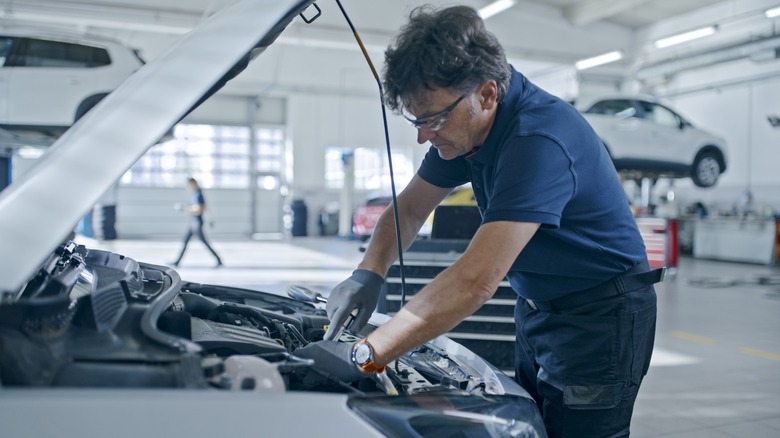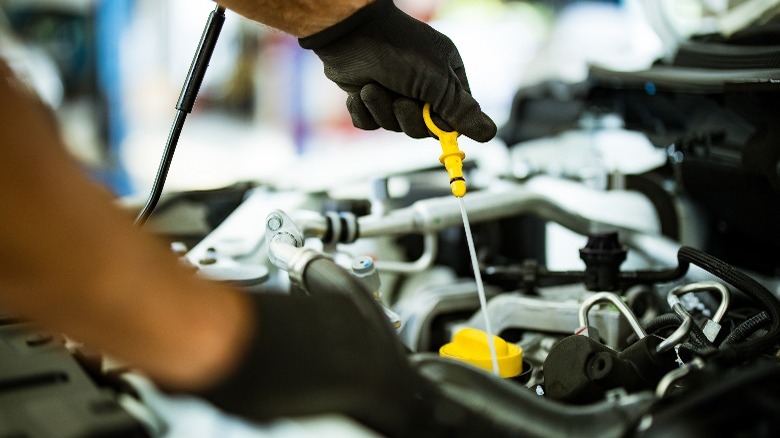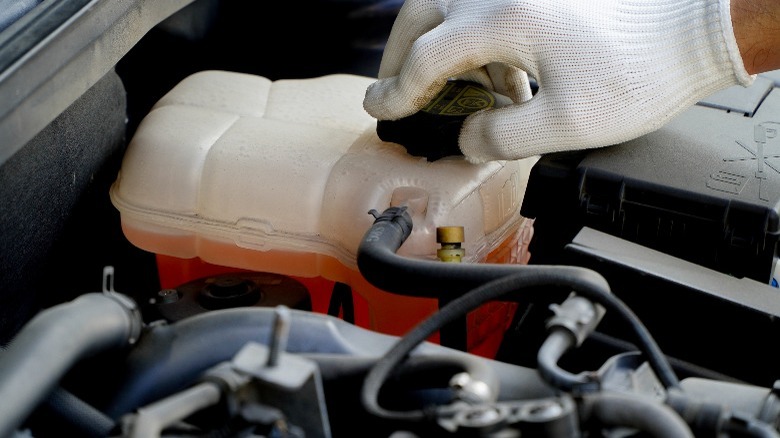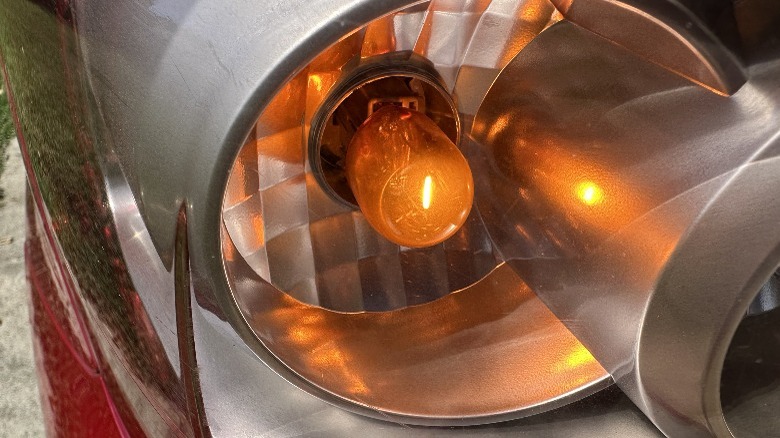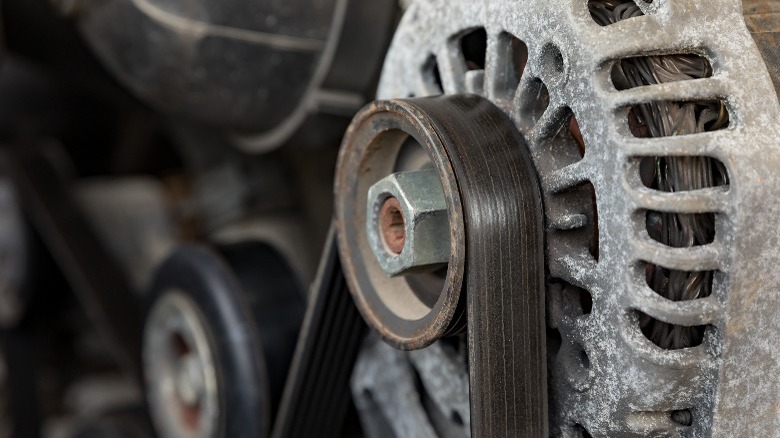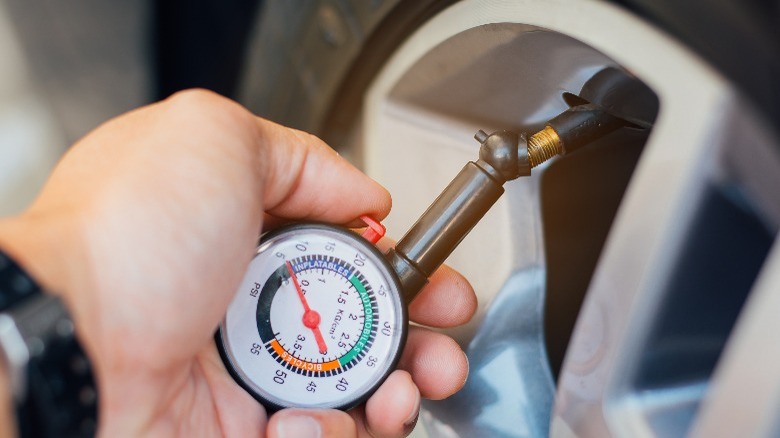5 Things You Need To Be Doing To Your Car Every 1,000 To 3,000 Miles
The secret to making a car last long is preemptive maintenance. While the more complicated long-term milestone maintenance routines might need proper servicing from an expert, there are simple automotive care routines you should adopt to keep your car healthy and avoid problems that might crop up in between the more popular maintenance schedules.
We've pinned the frequent maintenance routine at 1,000 to 3,000 miles because that encapsulates monthly to quarterly driving for many folks. In 2022, the Federal Highway Administration published data revealing that Americans drive an average of 13,476 miles a year, which translates to 1,123 miles per month.
Most of the things you should do to your car monthly are checks; you'll hardly replace anything. Your car's user manual has already estimated when components in your vehicle need replacements, and if you follow that, you should be fine for the most part. The point of these monthly checks is to catch anomalies and account for other variables the manual or maintenance schedule might have failed to consider. For instance, using secondhand tires might mean they'll wear before your recommended tire rotation milestone, or tuning your car for performance may translate to faster-than-normal degradation of components.
Inspect the engine oil level
Keeping the engine oil level adequately high and ensuring no contaminants are in the oil is a vital step in your car's maintenance. That's why many experts will tell you to change your car's engine oil every 5,000 to 7,500 miles. In earlier times, the former rule of thumb for cars was to change engine oil every three months (which falls into our 1,000 to 3,000 miles purview) — but many cars from the last two decades don't need an oil change this frequently.
When your car enters a new set of 1,000 miles, checking the engine oil level won't hurt. It's not likely it needs to be replaced, but it may have leaked without your knowledge. All it takes is a worn gasket or an improperly installed part for a leak. You can check the engine oil level by raising the dipstick and seeing if it falls within the recommended quantity bracket. If you notice it's lower than it should be, look for signs of leakage.
Another thing you should look out for while checking your oil is signs of other materials in the engine oil. If you inspect the oil and see metal shavings, you should take it to a service center immediately; it means there's abnormal wear in the engine. If the engine oil is discolored, you might have coolant in your oil, indicating another serious issue like head gasket failure.
Check if your coolant needs topping up
Your car's cooling system is as important as its lubrication. More accurately, coolant is also part of your car's lubrication. After checking your car's oil, the next thing you should do is see if you're running low on coolant. Manufacturers like Honda and Toyota recommend you change your coolant every two years or 30,000 miles. However, it doesn't mean that it can't leak or evaporate faster than usual. After all, many cars use a plastic thermostat housing prone to cracking and warping.
Some people recommend you check your coolant every week; there's nothing wrong with that. But unless you frequently go on long trips or spend a lot of time on the road, you can limit your inspection of the coolant to every 1,000 to 3,000 miles. Choose one day in the milestone range, pop up the engine bay, and look at the coolant reservoir. It's usually a transparent container with a pipe running into the engine. It also has minimum and maximum level markings, which you can use to tell when you're running low.
If you keep running out of coolant and don't notice a leak, you might be experiencing an internal coolant leak. If this is paired with any performance loss or odd exhaust colors, you should tow your car to a service center soon because there could be a head gasket failure.
Look for dead bulbs around the exterior
Bulbs die; it's an inevitable part of their life. Many modern cars have a way of informing you when one of your exterior bulbs dies. Some might do so with the infotainment system or dashboard cluster, but one of the most popular ways is the fast-paced blinker sound you hear when you use a turn signal. It indicates that the car's turn signal light system is using less power than it should — often meaning a bulb is dead.
Non-headlight exterior bulbs are an underrated but important driving safety feature. They are there to keep your driving predictable so other drivers can anticipate your next move. For example, brake lights tell others when you're stopping, and turn signals tell drivers you're about to make a turn. So, we've inserted them into our list of things you should check after every 1,000 miles.
When inspecting your car for dead bulbs, turn it on and use the hazard lights. Walk around the car to see if all the bulbs are blinking. Then, get a friend to press the brakes while in park to see if the brake lights are all working. Next, inspect the reverse light or backup lights by asking them to put the gear in Reverse. Don't forget to check if your license plate lights are also working. Finally, and most importantly, check if all the levels of your headlights, side marker lights, and foglights are working properly.
See how your belts and hoses are holding up
Cars may seem like advanced technology, but simple belts, pulleys, and hoses power most of them — and these things, like all things, can fail. Since these are mostly made of rubber or rubber-like compounds, they are especially prone to wear and tear, even though they are vital to a vehicle's functioning.
Internal combustion engine cars have a serpentine belt attached to the alternator. It charges the battery, drives the AC compressor, runs the water pump, and powers the electrical system while the engine is running, taking some of its rotational energy and using it for other critical functions. The other side of the coin is hoses. Most of them won't be visible when you lift the hood — some, like the fuel hoses and brake fluid lines, aren't easy to spot — but some of them, like the air intake and radiator hoses, are out there for inspection.
Check them for cracks, fraying, and leaks roughly every 1,000 miles. If you neglect them, they could cause quite serious breakdowns in the most unlikely places.
Gauge tire pressure across the wheels
Tires are another integral part of your car that needs frequent inspection. Tire rotation often gets all the attention, but you should check tire pressure as often as you check for signs of tire wear. Underinflation (or overinflation) leads to poor handling, reduces tire lifespan, and increases uneven wear.
Consult your car's manual for what PSI is best for your tires, and get a gauge to check that your tires remain in that range. It's unlikely that your tire's pressure will change drastically every month, but when it does happen, you'll be grateful you caught it in time. It can also be a good way to spot leaks and punctures in your tire. Some tire wounds can be tiny, barely perceptible until you notice that one of your tires is slowly losing pressure. This could save your life and reduce the risk of tire failure.
There could be other things that a quick pressure check can help you diagnose, like if your tire is old and porous or damaged or if the air isn't sealed in properly. Checking for these monthly or quarterly is fair enough frequency without getting too much in the way of your schedule.
